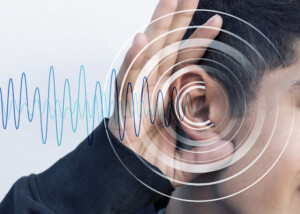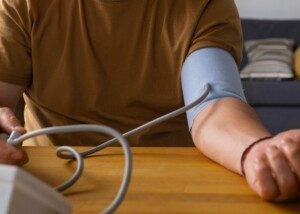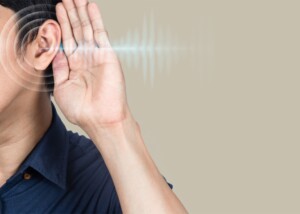Serious Diseases that Can Mimic TMJ Disorder

It’s happens: Someone is diagnosed with TMJ disorder but later learns it’s a misdiagnosis of a very serious disease, like a brain tumor or heart problem.
The symptoms of temporomandibular joint disorder are very similar to the symptoms of more serious medical conditions. (more…)
Can TMJ Disorder Cause Pulsatile Tinnitus?

Pulsatile tinnitus is scarier than the ringing tone type, which is why people hope that their TMJ disorder is the cause of the pulsatile type rather than a more serious cause such as a brain aneurysm! (more…)
12 Easy Ways to Cut Back on Salt to Save Your Heart
You’re probably eating WAY more salt and sodium than you think.
Here are 12 simple ways to lower salt intake to help prevent heart problems down the road.
American Heart Association Daily Salt Intake Recommendations
• Up to 2,300 milligrams (mgs) per day
• Ideally, no more than 1,500 mg/day for most adults
• Exempt from the ideal limit of 1,500 mg/day are adults who lose a lot of salt through sweat such as competitive athletes and those whose jobs involve extended work in a hot environment.
“When we think of salt we think of the white mineral that we use to flavor our food,” says Shana Spence, MS, RDN, CDN, a registered dietitian nutritionist based in New York.
“Our body does need salt to function [one-fourth teaspoon a day]. However, with so many processed foods readily available, it can be easy to over-consume.”
12 Ways to Lower Salt Intake for Better Heart Health
#1 “Cut back on processed foods,” says Spence. “This seems simple, but is also complicated because what is considered processed?
“Anything that has been altered or manipulated is considered processed. Salt is used as a preservative in many foods to retain its ‘freshness.’
#2 “Use spices and herbs as an alternative for flavor instead of salt. Garlic and ginger are amazing spices with tons of flavor. They pack a strong punch and you’ll not need salt with these spices.
#3 “Reach for the black pepper first. We’re sometimes taught that we put both black pepper and salt on our foods together. Try to just put pepper on foods first and you’ll find that you don’t even need the salt.

#4 “Another way to forgo the salt and get in more flavor is opting for spicy as in hot sauces, sriracha, jalapenos, etc. Eating spicy foods is also good for you and can give your metabolism an extra boost!
#5 “Drink more water. Sometimes our cravings can indicate what we need more of in our body. If you’re craving salt, that might be an indication that your body actually needs water.”

#6 “Low sodium broth options. When making soups and stews we sometimes opt for using ready-made broths, but opting for lower sodium is the best choice.
“Remember, you can always add in more herbs and spices for flavors so you don’t need the salt.
#7 “Weaning yourself is important. Cutting out salt completely will not do the trick and could backfire tremendously. Start by mixing unsalted foods with salted foods. For example, take some non-salted nuts and mix with some regular salted nuts.
#8 “Read nutrition labels. Always check the back of food packaging and look for where ‘sodium’ is listed.”
This includes on foods with so-called hidden sodium such as spices, seasoning mixes and condiments. “Try to then opt for foods that have 5% or less of sodium per serving.”
Interception: Do You know what Industry Sleight of Hand Is?
This relates to reading nutrition labels. Avoid being reeled in by food industry trickery.
The nutrition information on the bottle, box or package is arranged to trick you into thinking there’s less sodium in the product than there really is.
This is done by listing a “serving size” that’s often half or one-third the amount of the product in its container, even though most people will eat all of the product in one helping.
For example, one “serving size” of a can of soup is (read the label carefully) actually HALF the can.
So if you pour the whole can in a bowl and eat all of it, you just ate double the “serving size” amount of sodium!
Back to More Ways to Cut Back on Dietary Salt to Make Your Heart Happy
#9. Add chopped nuts, onions and celery to dishes that you’d normally add salt to, such as rice.
#10. Dine out less. Restaurants load dishes with sodium.
#11 And when you do dine out, realize that soups and sauces will be packed with salt. Ask for sauces and dressings on the side. Adding them in yourself will encourage you to consume less sodium.
#12 Beware of other names for salt or sodium: monosodium glutamate, disodium guanylate and fleur de sel.
BONUS Trick for Lowering Salt Intake
Don’t “pinch” the salt out of the bottle.
Though it may seem impossible to pinch more than one-fourth a teaspoon, what often happens is that you’ll think, “Oh, this needs another pinch.”
And you may end up ultimately pinching out too much.
So keep it accurate by using the one-fourth teaspoon measurer.
If you need a lot less than one-quarter teaspoon, then buy a one-eighth teaspoon measurer.
 Shana Spence of The Nutrition Tea is committed to providing trending information and nutrition facts covering a wide range including nutrition for heart disease and diabetes, pediatric nutrition and healthful lifestyles.
Shana Spence of The Nutrition Tea is committed to providing trending information and nutrition facts covering a wide range including nutrition for heart disease and diabetes, pediatric nutrition and healthful lifestyles.
 Lorra Garrick has been covering medical, fitness and cybersecurity topics for many years, having written thousands of articles for print magazines and websites, including as a ghostwriter. She’s also a former ACE-certified personal trainer.
Lorra Garrick has been covering medical, fitness and cybersecurity topics for many years, having written thousands of articles for print magazines and websites, including as a ghostwriter. She’s also a former ACE-certified personal trainer.
How Many Eggs a Week Can a Diabetic Eat?

If you’re a diabetic and really love eggs, there’s good news.
You may be wondering how many eggs you can “get away with” each week if you have diabetes.
Dr. Nick Fuller and his team at the University of Sidney’s Boden Institute of Obesity, Nutrition, Exercise and Eating Disorders have determined that the magic number is 12 over a seven day period.
The study, which appears in the American Journal of Clinical Nutrition, occurred over 12 months.
One group ate a dozen eggs per week while another group ate two. At no point over the 12 months were there adverse changes in anyone’s cardiovascular risk markers.
In addition, both groups were on a weight loss plan, and the consumption of 12 eggs a week did not make any difference; both groups achieved the same weight loss.
“Despite differing advice around safe levels of egg consumption for people with pre-diabetes and type 2 diabetes,” says Dr. Fuller in the paper, “our research indicates people do not need to hold back from eggs if this is part of a healthy diet.”
The diet that the study participants were put on replaced saturated fats with the healthier mono- and polyunsaturated fats. An example of this would be olive oil in place of butter.
What are cardiovascular risk markers?
• Cholesterol profile
• Blood pressure
• Blood sugar
Measures of these risk markers were the same in the 12 eggs/week group and in the two eggs/week group.
“While eggs themselves are high in dietary cholesterol — this study supports existing research that shows consumption of eggs has little effect on levels of cholesterol in the blood of the people eating them,” says Dr. Fuller in the report.
He notes that diabetics tend to have higher levels of the so-called “bad” cholesterol: the LDL.
Nevertheless, eating 12 eggs a week is perfectly fine. And not just for diabetics, but for prediabetics and the general population.
Eggs contain protein, plus selenium, vitamin E and other important nutrients, and one egg has only 70 to 80 calories.
 Lorra Garrick has been covering medical, fitness and cybersecurity topics for many years, having written thousands of articles for print magazines and websites, including as a ghostwriter. She’s also a former ACE-certified personal trainer.
Lorra Garrick has been covering medical, fitness and cybersecurity topics for many years, having written thousands of articles for print magazines and websites, including as a ghostwriter. She’s also a former ACE-certified personal trainer.
Source: sciencedaily.com/releases/2018/05/180507074212.htm
Can You Be Too Old to Get TMJ Disorder?

What’s unsettling is that older people are more likely to get cancer, which can cause symptoms very similar to TMJ disorder. (more…)
Can TMJ Disorder Ever Be Fatal? The Link to Cancer

Death can be associated with TMJ disorder, but not in the way you might be thinking.
Problems with the temporomandibular joint is very common among people of all ages. (more…)
What Is Temporal Arteritis?

Most cases of temporal arteritis occur in people older than 50, but this doesn’t mean a younger person cannot ever develop this condition.
“Temporal arteritis or giant cell arteritis is a systemic inflammation of blood vessels,” says Natasha Fuksina, MD, an internal and integrative medicine specialist who combines traditional, integrative and functional medicine to restore health and function.
Dr. Fuksina explains, “Commonly it affects the blood vessels around the temples, thus giving rise to the name temporal arteritis.
“The cause is unknown but represents an attack of the immune system, which can lead to potentially serious complications.
“Common symptoms are severe headaches, scalp pain, visual changes, fevers, malaise.”
Additional Symptoms (no particular order)
• Jaw pain after chewing
• Facial pain
• Throat pain
• Tongue pain
• Joint pain (shoulder, hips)
• Arm pain from exercise
• Patients may have many or only a few of these symptoms.
The diagnosis can be challenging due to the uncommon occurrence of temporal arteritis and the fact that its symptoms can mimic TMJ disorder and other conditions.
“Serious complications are blindness, aortic aneurysm (bulging of the weakened aortic wall), and rarely, stroke,” says Dr. Fuksina.
The term “giant cell” arises from the fact that under a microscope, the cells of inflamed temporal arteries appear pretty big.
The average age of temporal arteritis onset is 72, with women being affected two to three times more than are men.
Cases of people under 50 with temporal arteritis or giant cell arteritis have been reported in medical literature.
The Journal of Vascular Surgery (May 2006) reports the case of a 17-year-old boy, and the journal Joint, Bone, Spine (May 2013) reports the case of two men, 31 and 40.
“Temporal arteritis can co-exist with polymyalgia rheumatica, another inflammatory disease characterized by stiffness and pain in the neck and shoulders, in 50% of the cases,” says Dr. Fuksina.
“Temporal blood vessel biopsy is the gold standard for diagnosis. Treatment is usually high dose steroids such as prednisone.”
Other features that suggest (though don’t confirm) giant cell arteritis are:
• Elevated erythrocyte sedimentation rate
• Mild anemia
NOTE: In a small number of cases, an afflicted individual’s temporal artery sample will not show inflammation.
However, chances are high that a biopsy of the temporal artery on the other side will be positive.
Treatment
• The prednisone is taken daily, 40-60 mg.
• Most patients improve quickly.
• If blindness has already occurred prior to treatment, it’s usually permanent.
• Over time in nearly all cases, the prednisone dose can be lowered.
• Most patients will need the medication for one to two years.
 Dr. Fuksina is the founder of astraMDhealth, which includes telemedicine. Double board certified in internal and obesity medicine, she focuses on a personalized approach, including metabolism and genetic makeup, to customize treatments and preventive care.
Dr. Fuksina is the founder of astraMDhealth, which includes telemedicine. Double board certified in internal and obesity medicine, she focuses on a personalized approach, including metabolism and genetic makeup, to customize treatments and preventive care.
 Lorra Garrick has been covering medical, fitness and cybersecurity topics for many years, having written thousands of articles for print magazines and websites, including as a ghostwriter. She’s also a former ACE-certified personal trainer.
Lorra Garrick has been covering medical, fitness and cybersecurity topics for many years, having written thousands of articles for print magazines and websites, including as a ghostwriter. She’s also a former ACE-certified personal trainer.
Top image: ©Lorra Garrick
Sources
hopkinsvasculitis.org/types-vasculitis/giant-cell-arteritis/
sciencedirect.com/science/article/pii/S0741521406000061
ncbi.nlm.nih.gov/pubmed/23142255
Ballet Lessons vs. Martial Arts for Chubby Little Girls

If you’re thinking of enrolling your overweight young daughter in ballet classes, you may want to abandon that idea and consider martial arts.
Though ballet comes with it an association of glamour, glitz and fairy tales, do not let this cloud your judgment.
My Inspiration
I have had a lot of martial arts training over the years at different schools.
I am also an expert in fitness, obesity and weight loss (former personal trainer and group fitness instructor).
In addition, I was inspired to write this article after reading a post in a forum by a mother who was very upset that her chubby young daughter’s ballet classmates were ridiculing her size, and the moms of those students were asking questions about the little girl’s weight.
Damn! Can a child EVER escape judgement for her weight? You’d think that in a discipline as strict as ballet, there’d be no ridicule or judgement.
Okay, you have to expect that other moms, plus the students and even the instructor, will wonder how much an overweight child will progress in ballet.
But keep in mind that ballet classes, traditionally, do not emphasize a “no judgement zone.”
Martial Arts: No Judgement Zone Galore
On the other hand, any high quality martial arts school will let you know upfront that bullying and ridicule are prohibited, and individuality and acceptance are encouraged.

Shutterstock/Kaderov Andrii
I don’t know how many ballet schools offer outside activities for their students, but high quality martial arts schools are known for this: pizza nights, movie nights, bowling parties, hikes, etc.
Martial arts schools offer an opportunity for obese or overweight children — who feel judged and even ostracized at regular school for their weight — to feel a strong sense of belonging and fitting in with other kids!
Ballet vs. Martial Arts Lessons: Comparison of Difficulty Learning
There are elements of ballet that would be extraordinarily difficult for an overweight child to learn — simply because that child is carrying too much body weight.
Ballet is demanding enough even for thin little girls.

Sure, at the beginning, everything will seem equal, but as lessons progress, the difficulties caused by the excess body weight will become increasingly relevant.
But in martial arts, being chubby is not an impediment. In fact, if your young daughter meets the criteria for obesity, she can still progress significantly in martial arts.
Before you think, “Hey wait a minute, my fat child can’t do flying kicks,” keep in mind that leaping and “flying moves” are popularized in films.
In real life martial arts classes, some instructors don’t emphasize aerial moves.
Other instructors will teach them to students who want to learn these.
And yes, it will be more difficult for a fat child to execute a flying side kick, but by the same token, that skinny kid who can fly like a butterfly may also flounder when it comes to board breaking – something that your very overweight daughter can excel in!
I have seen fat little girls and boys win trophies at karate tournaments.
There are many different facets of martial arts training, which is why no particular body type excels!
I’ve seen very stiff legged thin kids. I’ve also seen fat kids who could do the splits and kick high.
There’s also grappling-style martial arts, for which being overweight is not an impediment, and may even be an advantage.
And then there’s kata, also known as forms or patterns: choreographed moves in which the practitioner defends herself against imaginary multiple opponents.
At a tournament, a heavy child can take first place in the forms division for their particular rank. I’ve seen it happen, and it happens all the time.
They can also take first place in the sparring division, also known as point fighting. Some tournaments have board breaking competitions.
Now I’m not saying that children’s martial arts should be all about tournaments and winning trophies.
But tournament competition fosters self-confidence and teaches fat children that obesity doesn’t have to get in the way of athletic participation!
Some martial arts schools do NOT involve tournament competition, and that’s perfectly okay, too.
Kids, including overweight girls, will still develop self-defense, self-confidence and learn to use their bodies in impressive ways.
THE SUBJECT OF WEIGHT WILL ALWAYS BE PRESENT IN BALLET CLASSES
In ballet, let’s face the truth: A chubby girl will feel very discouraged and judged. In martial arts, a heavy body is not an obstacle to excelling.
Of course, an eight-year-old who weighs 200 pounds is going to have problems with just about ANY sport, but I’m talking about the average overweight or even clinically obese little girl (or boy).
- It’s a hardcore fact that weight IS an issue with ballet. There’s no way around it.
- Ballet is a discipline in which chubby students, especially as they get older, will be told they need to lose weight.
But in a high quality martial arts dojo, children will never be told, “You have to lose weight.”
In fact, this hardly happens at ANY martial arts studio, because the instructors know that (can’t say this enough) being heavy is not an impediment to executing a forceful kick, upper body strike, joint lock technique or grappling move.
When it’s time to break boards, spar, slug at a heavy bag, strike at mitts held by an instructor, perform a kata, grapple on the floor or learn self-defense techniques…WEIGHT DOES NOT MATTER!
What if your overweight daughter is begging for ballet lessons?
Certainly, you don’t want to tell her, “You can’t take ballet lessons until you lose weight.”
But the bottom line is that if your overweight daughter has not mentioned anything about ballet lessons, you should vehemently consider the possibility that getting her involved will result in ongoing pressure to lose weight, rude comments from other parents, plus possibly ridicule from classmates.
You will not find this adversity in a high quality martial arts school. And if you want her to take ballet lessons for weight loss, here’s a news flash: Martial arts will be far more effective at this.
 Lorra Garrick has been covering medical, fitness and cybersecurity topics for many years, having written thousands of articles for print magazines and websites, including as a ghostwriter. She’s also a former ACE-certified personal trainer.
Lorra Garrick has been covering medical, fitness and cybersecurity topics for many years, having written thousands of articles for print magazines and websites, including as a ghostwriter. She’s also a former ACE-certified personal trainer.
.
Top image: Shutterstock/Yuriy Golub
Can Weather Changes Affect TMJ Disorder & Make It Worse?

Yes, TMJ disorder can definitely be made worse by weather changes, but there are six things you can do to help prevent problems with pain and other troublesome issues. (more…)
What Kind of Facial Twitching Can TMJ Disorder Cause?
Are the twitches in your face scaring you?
It’s possible they can be caused by TMJ disorder, but it’s also possible those twitching muscles can be caused by a neurological disorder. (more…)




































































